Our Leather Products Are Contributing to Deforestation & Displacement
What Is The Problem?
According to the World Resources Institute Report on Deforestation and Agriculture, “cattle pasture now occupies some 45.1 million hectares (Mha) of land deforested between 2001 and 2015, accounting for 36 percent of all tree cover loss associated with agriculture during the time period.” This is the case across most of the tropical world where certain commodities such as rubber, cocoa, palm oil and leather are produced. However, in the maps World Resources Institute created, it is clear that the Amazon biome has the highest percentage of forest land replaced by cattle agriculture for the time period between 2001 to 2015.
The Amazon in Brazil accounts for the bulk of forest area replaced by cattle in the last decade. This not only impacts the overall environmental health of our planet, it also impacts the indigenous communities that have lived in and protected—and continue to live in and protect—the Amazon forest. While the report links this process of forest replacement to the demand for beef, the fashion industry’s demand for large quantities of leather also contributes to this loss of forest cover.
JBS is one of the largest exporters of beef and processed leather globally. In 2020, their consolidated net revenue was $270.2 billion Real, which is about $480 billion USD. JBS Couros, the tanning arm of the corporation, is the biggest producer of leather in the world. JBS Couros is one of the major players in leather-based cattle production in the Amazon, which contributes to mass deforestation. JBS Couros exports leather, which eventually makes its way to brands who are sourcing it for their designs. This knowingly (or unknowingly) implicates brands in fueling the climate crisis and the displacement of Indigenous livelihoods and life-ways.
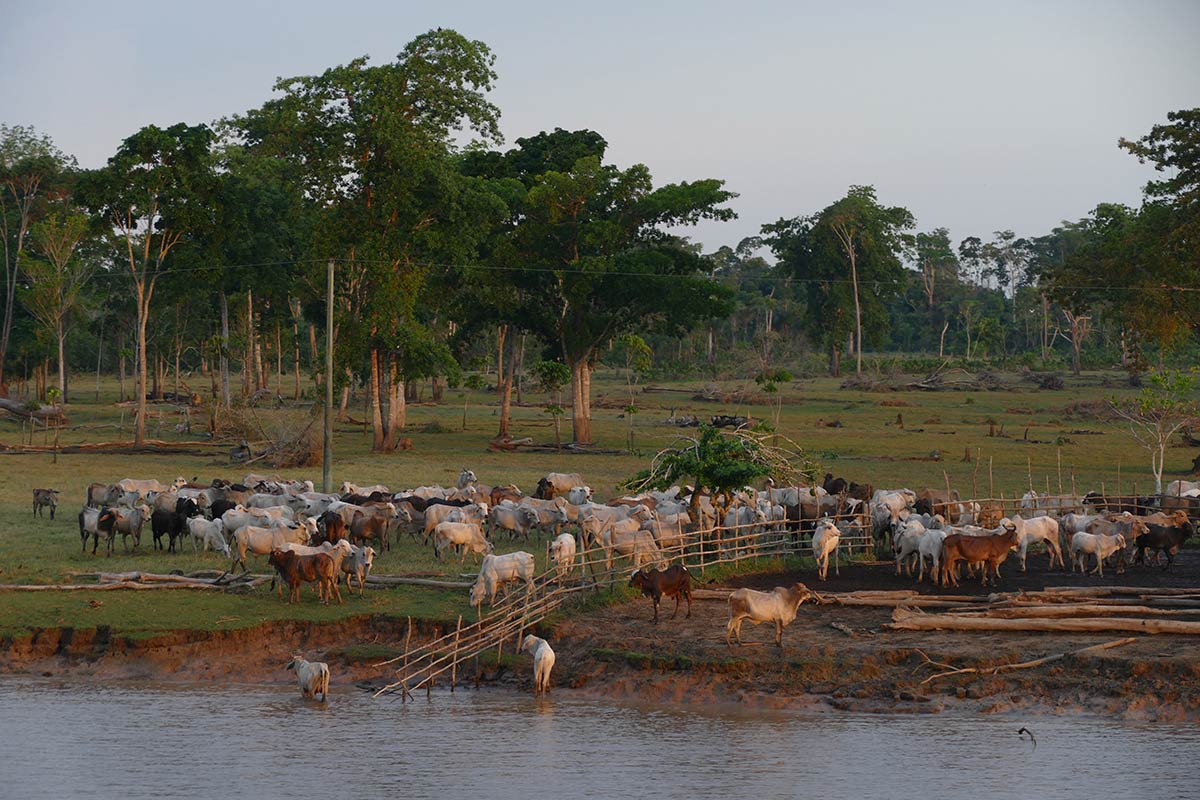
Context
A lot of leather is sourced from countries outside of Europe and North America, though most luxury leather goods are consumed in Western regions. Since the onset of colonialism, patterns of raw materials being extracted from the “Global South” then being shipped thousands of miles to the “Global North” has been normalized in mainstream supply chains. This process not only increases carbon emissions, it also reinforces unequal trade relationships between Western countries and countries formerly colonized by Europe and / or experiencing imperialism from North America. Additionally, it furthers the destruction of our environment by incentivizing non-Western nations to have weaker, or non-enforced, environmental laws in order to attract European and American corporations. Most leather we consume comes from Africa, Asia and Latin America—no doubt reproducing the maps of colonialism and environmental domination.
The Fashion Industry is one of the largest consumers of leather. Almost half of all leather in the fashion industry is used to make shoes, though handbags and clothing also increase the demand for leather. Leather production pollutes waterways and displaces communities to provide more space for cattle. To maximize how much leather is produced, industrial scale cattle grazing happens in cut-down forests and on land that should be used for farming. In addition to the way cattle are treated along with the loss of forests and arable land, almost every stage of the leather production process causes harm to people and our environment. Tanning is the most toxic phase of leather processing.
Tanning is the process of treating the hides and skins of cattle to produce the material we know as leather. The tanning industry has serious challenges, both in sourcing raw materials and processing hides. The fastest, and most commonly used, tanning process turns hides into leather using noxious carcinogenic chromium, which are harmful to health and ecosystems. As a result of these health and environmental risks, many tanneries in Europe and North America have been shut down due to regulations. Thus, suppliers and brands go to countries in the “Global South” where trade agreements benefitting Western corporations pressure governments to decrease environmental, public health, and labor regulations so that tanning can happen quickly and cheaply.
The Brazilian Amazon is crucial to the health of our planet. The demand for leather by the fashion industry exasperates climate change and contributes to the decrease in forest cover that is necessary for carbon sequestration. According to the National Oceanic Atmospheric Administration:
The Amazon is estimated to contain about 123 billion tons of carbon above and below ground, and is one of Earth’s most important terrestrial carbon reserves. As global fossil-fuel burning has risen, the Amazon has absorbed CO2 from the atmosphere, helping to moderate global climate. (2021)
Deforestation in the Amazon literally impacts all humans because we share a planet. Brands adopting sustainable policies and practices must include analysing and transforming their supply chains away from environmentally, socially destructive practices.
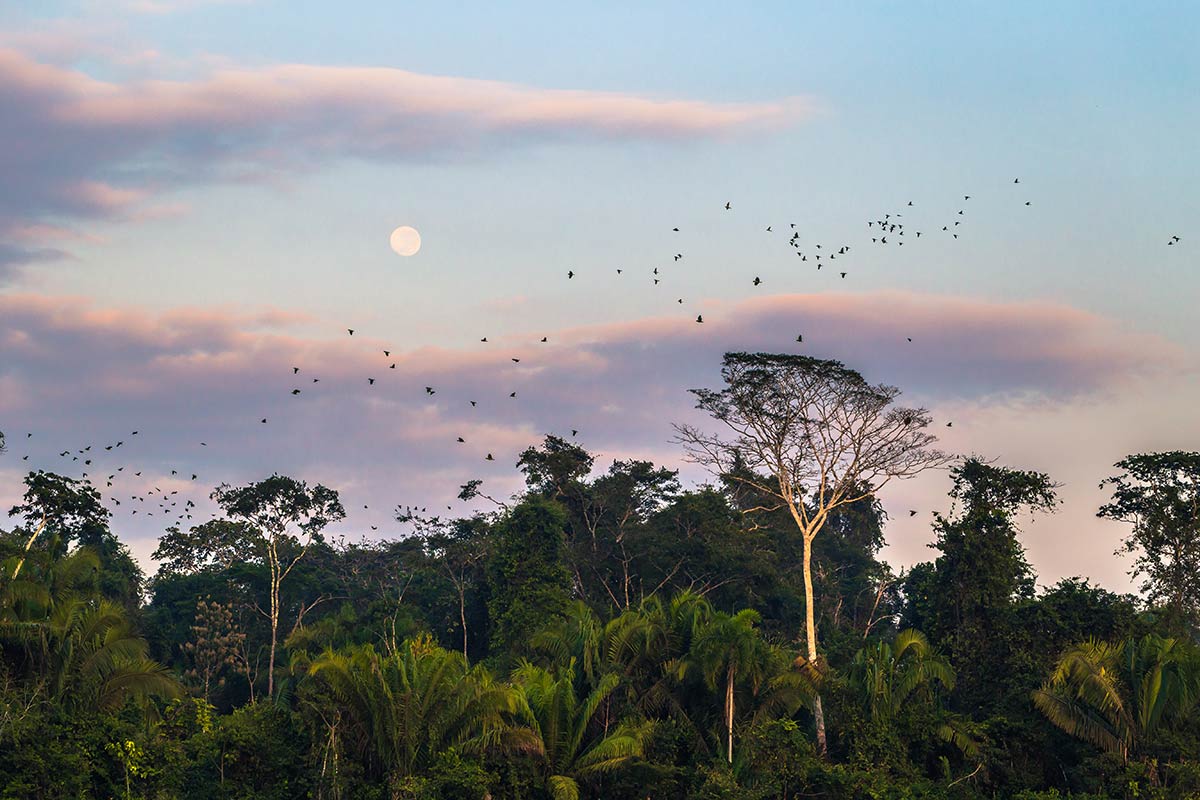
Who And What Is Impacted?
All living things are impacted by leather production-fueled deforestation in the Brazilian Amazon. People, the environment, animals, and the climate are all suffering from leather production supply chains as they currently are. However, certain communities and ecosystems are damaged more directly. Lives and livelihoods are at risk of eradication. The Awa, Yanomamo and Kayapo people have been living in the Amazon forest for thousands of years. They have developed knowledge and skills that have allowed them to subsist from the rainforest while simultaneously supporting its natural regeneration.
The Amazon is home to millions, yes—millions, of species of plants and animals, along with at least a million indigenous people. The Awa are one of the few populations left on earth that maintain a lifestyle closely linked to hunter-gatherers, although that has become nearly impossible these days. Similarly to the Awa, the Yanomamo and Kayapo peoples were nomads who lived in small settlements for a certain time then moved on once resources there were getting low. That type of lifestyle allowed time for the areas they inhabited to regenerate. As colonization continued and became intertwined with modernization, these tribes were forced to give up their traditional lifestyle in order to participate in the mining and agricultural industries. Deforestation due to logging, mining and leather / beef production continues to recede the homelands of these populations.
Since Jair Bolsonaro has become president in Brazil, the threat to indigenous lives and life-ways have become more and more dire. As environmental protections in the Amazon are rolled back under Bolsonaro, indigenous communities find themselves equally at risk of eradication. In August of 2021, InsideClimate News questioned if the Bolsonara government’s attacks on the Amazon forest and ingenious tribes like the Awa and Yanomamo can be considered International Crimes:
Brazil’s 1988 constitution includes a mandate for the government to demarcate—or identify and set aside—all Indigenous territories. Bolsonaro is the first president since 1988 to stop the demarcation process, and he has not protected any additional Indigenous territories since taking office in January 2019. He’s also backed legislation that would open up tribal lands to industrial development.
Deforestation in the Brazilian Amazon has been at its highest since 2008 in the last couple of years. In 2020 the BBC reported that “a total of 11,088 sq km (4,281 sq miles) of rainforest were destroyed from August 2019 to July 2020. This is a 9.5% increase from the previous year.” Indigenous communities who try to protect the forest are attacked and sometimes killed so that more land is available for large-scale industry.
The Amazon forest is one of our planet’s last sanctuaries for indigenous communities, animals, plants, insects, reptiles, fish and so many more living organisms. Chopping down trees to make space for cattle, along with over-grazing has meant a loss in habitat for hundreds of thousands of living things in addition to humans. All of this devastation for handbags and shoes? We must find another way, starting with holding accountable those who engineer, profit from and are complicit in this environmental violence.
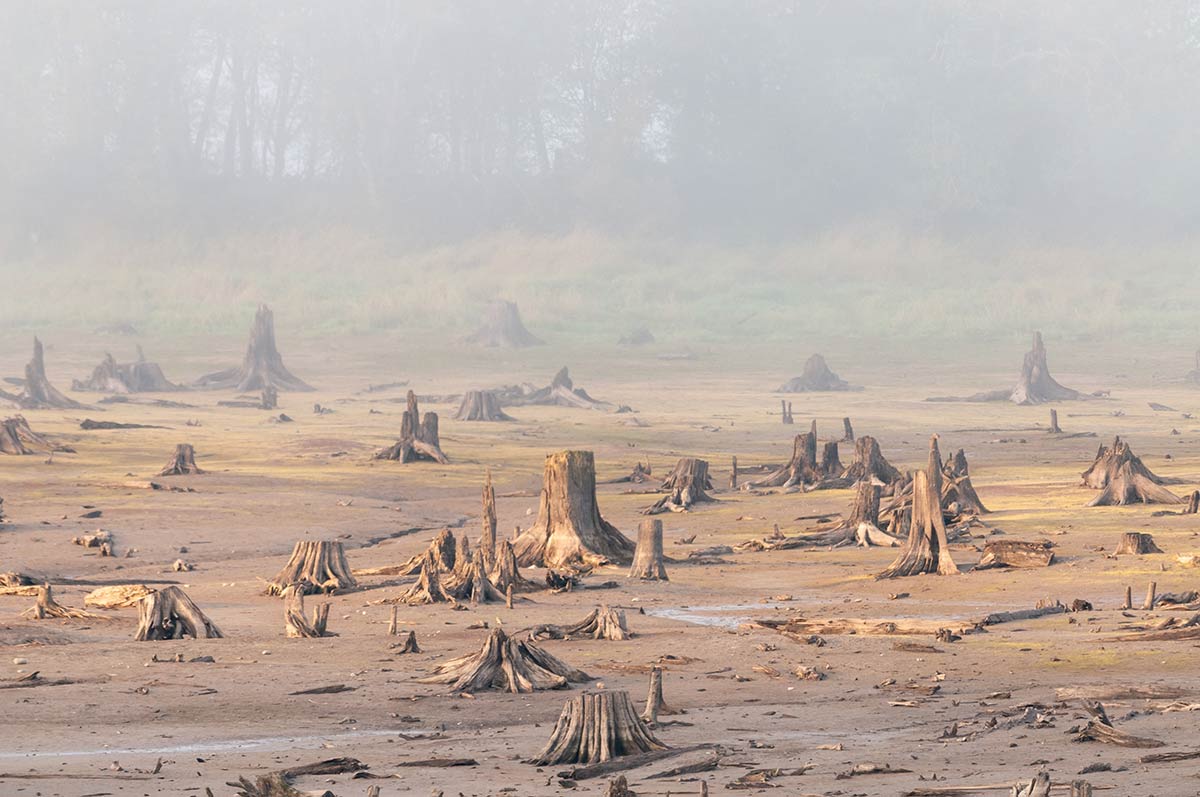
What Brands Are Contributing To The Problem?
A report by Stand.earth in collaboration with the Slow Factory published in November of 2021 found that over 100 brands “are working with manufacturers and tanneries that source from opaque supply chains and companies that have known links to cattle raised on recently deforested Amazon land.” Many of these brands are linked to JBS, aforementioned. This means that several brands are complicit in Amazon deforestation and the displacement of indigenous communities through their supply chains.
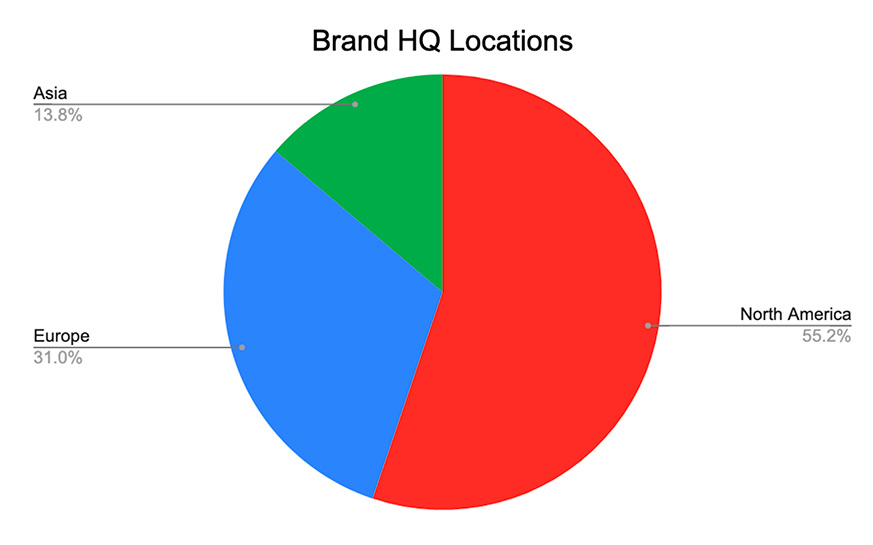
Chart by Ruba Abounasr
Unsurprisingly, of the brands found to have links to deforestation in the Amazon, more than two-thirds of the brands are North American and European companies with headquarters in Europe, the United States, or both. Most of the leather products consumed from these brands are in Europe, the United States, and Asia. Additionally, most of the profit is accumulated in Europe and the United States rather than benefiting the regions where the raw materials come from and are processed.
The maps of supply chains used by these brands mimic colonial patterns that were not sustainable a few centuries ago, and are even more problematic now. Whether it is the leather processors, suppliers and / or tanneries these brands are using—the handbags and shoes they are making are destroying life in the Amazon rainforest as a result. In order to protect life on this planet, the fashion industry needs to transform and decolonize its supply chains, decrease its scale and embrace true sustainable practices like indigenous communities in Brazil have been doing for thousands of years.
How To Know If Your Leather Is More Sustainable
Can leather production ever be completely sustainable? Definitely not at the scale it is happening now and has been happening over the last decades. According to a June of 2021 report, “The Global Leather Goods Market size is expected to reach $560.5 billion by 2027, rising at a market growth of 9.9%.” This is not sustainable for the animals, ecosystems, or communities impacted by leather production. However, there are ways to be less destructive in the leather production process and in leather supply chains. It starts with understanding how leather is sourced and produced.
Supply chains are intentionally complex and opaque, knowing and understanding the supply chain for your leather products is a first step. Secondly, learning about how the cattle are raised and the land on which they are being grazed. Asking questions like: what are the grazing practices of the cattle, and are they grazing on arable land that should be used for food farming or was once forest? Where are the cattle reared? The cattle used for leather are primarily used for beef, so how are they treated in life and when they are slaughtered? Other ways to understand the negative environmental impact of a leather supply chain is mapping out where the leather is tanned and processed? As well as, how many countries are involved in the stages of leather production? The more geographies these processes take place in, the more carbon emissions are being released into the atmosphere through transport. It is equally important to think about the tanning process. Most tanning uses toxins, however vegetable tanning is an option. Vegetable tanning is a more ethical and sustainable process, which takes longer but is significantly less harmful.
From obtaining raw materials, which includes: rearing livestock, grazing and slaughter. To leather production, including: preparing the hides, tanning, crusting and dyeing. Every stage of this supply chain has to be scrutinized, reimagined and transformed. While ‘vegan’ leather is coined as the more sustainable alternative, most vegan leather is made out of plastics that fuels the fossil-fuel extractive economy. Even if your supply chain will never be completely sustainable, it can certainly be much more ethical and regenerative.
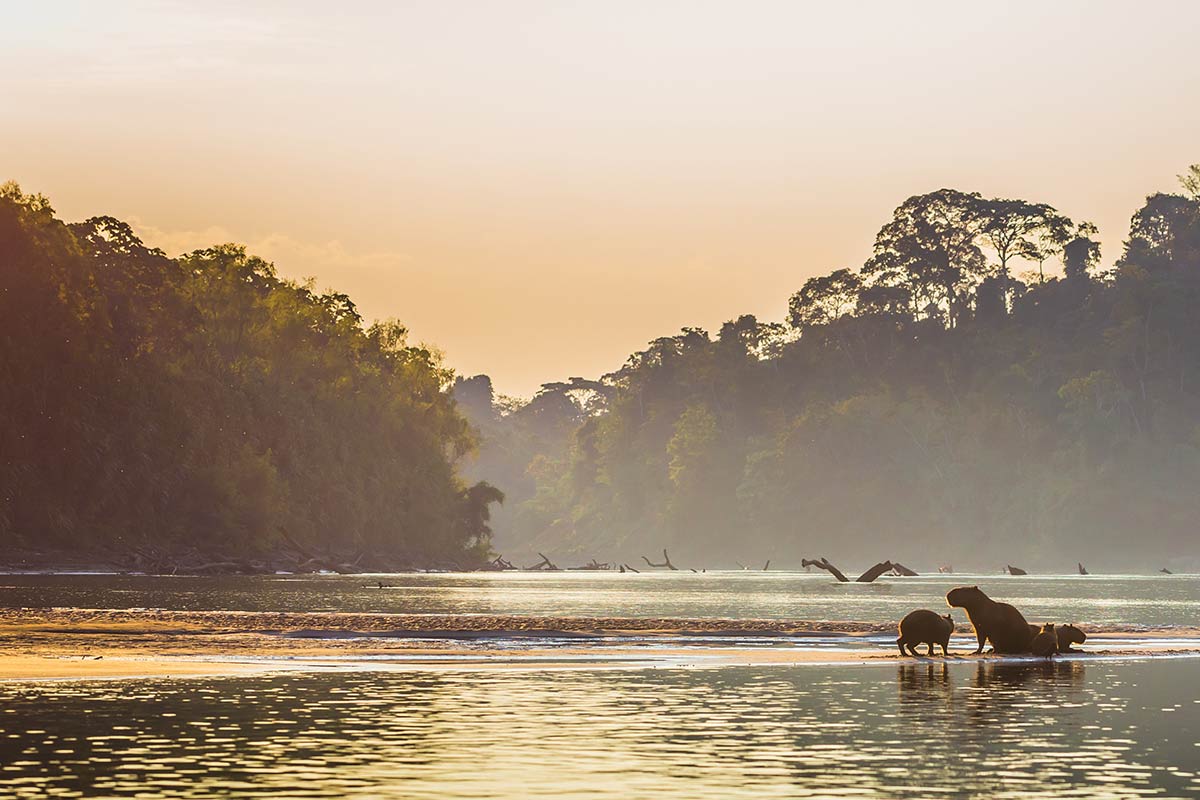
Methodology and Vetting Process
To begin searching for more sustainable leather producers and tanneries I did a Google search for companies that had ‘sustainable,’ ‘ethical,’ and / or ‘green’ on their websites. I contacted colleagues, organizations and companies I was already aware of. Based on this I compiled an initial list of more than a dozen companies. From there I emailed and called the companies on the list to ask questions about their product chain and the practices used. There were several questions I asked to determine if they are more sustainable in their approach.
-
Do you know where the cattle for the leather is raised, what the grazing practices are, and what type of land the cattle are grazing?
-
What conditions are the herders, or people who take care of the cattle, living in?
-
How is the leather processed and tanned; is a chemical tanning process used—if so, how are the chemicals disposed of safely?
-
How many countries or regions does the raw leather have to travel before it becomes a finished product?
-
Is everyone at each level of the supply chain paid fairly and has access to healthcare?
-
Do you have an understanding of what is happening at each stage of the process?
Many companies did not respond at all. Some companies told me they could not give me that information for various reasons, either because they did not know or because they did not want to reveal how they source their raw materials. A few companies didn’t answer the questions at all, or simply responded by saying something generic like: “we use sustainable and ethical sourcing.” There were a handful of companies where the language barrier made it difficult to get and understand information. On the other hand, unfortunately, a couple of the smaller ranches that do use sustainable, climate beneficial practices simply do not have the capacity to process at a larger scale. Hence, the list of companies below is based on information that they provided to me, when applicable, corroborated through digital research.
Alternatives & Resources
As sustainable practices become more widely adopted, options for brands to make more responsible choices are increasing. Across North America and Europe, where most of these brands are headquartered, there are companies working towards more sustainable leather production. Rather than sourcing leather from thousands of miles away, polluting the environment in the process, and adding carbon emissions to the atmosphere—brands can look regionally to more ethical, sustainable options.
Leather Industry Businesses That Are More Sustainable
| COUNTRY | REGION | COMPANY NAME | TANNING / SOURCING? |
| North Carolina, United States | North America | Green Hides* | supplier |
| California, United States | North America | Shepherdess | supplier |
| California, United States | North America | EcoHides | tannery |
| New York, United States | North America | Pergamena | tannery |
| Oregon, United States | North America | Traditional Tanners | tannery |
| California, United States | North America | Hollow Bone | tannery |
| Ontario, Canada | North America | Inter-Leather | supplier |
| Italy | Europe | Green Hides* | tannery |
| Denmark | Europe | Sørensen | supplier |
| Switzerland | Europe | Zeller | tannery |
There are several alternatives and a host of resources for brands interested in creating more sustainable leather supply chains or working with natural leather alternatives (such as using fruit like coconuts). For example, Savory Institute is a resource for those who want to ensure the cattle from where their leather comes is grazed responsibly and in a climate beneficial way. Leather Sustainability by BLC Leather Technology Centre Ltd. is a company in the United Kingdom that does leather supply chain audits to help brands decrease the environmental impact of the leather they choose.
In Brazil, Novo Campo is an organization that practices sustainable cattle ranching in the Amazon. As for tanning, Veg Leather Hub spreads awareness and best practices promoting vegetable leather tanning. It is a natural and slower process that doesn’t harm the environment as much as mainstream chemical tanning processes. For brands who do not know where to start, Common Object provides a sustainable leather guide for anyone in the fashion industry interested in more sustainable fashion. There are a myriad of resources and ways that fashion brands can support the protection of the Amazon forest and preservation of Indigenous lifeways through intentional choices to transform their supply chains.




